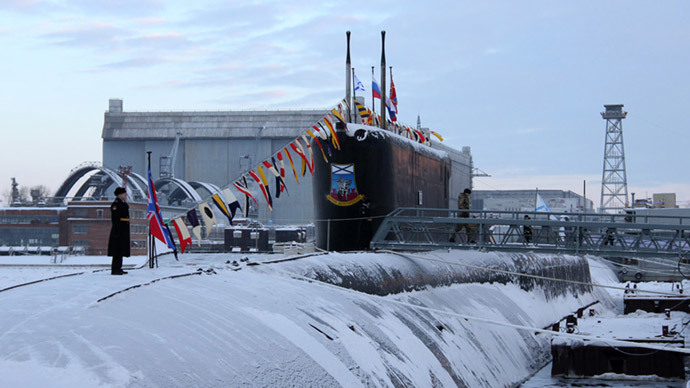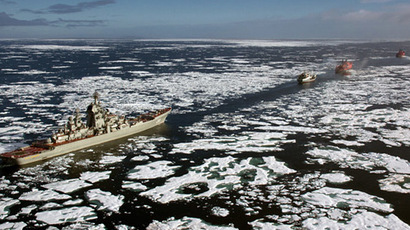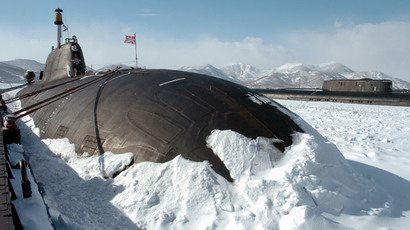Russian bases to span entire Arctic border by end of 2014

Russia will have military control of the entirety of its 6,200 km Arctic coastal zone by the end of 2014, just a year after Moscow announced its ambitious plan to build military presence in the region, Defense Minister Sergey Shoigu has announced.
“We have set quite a pace in our foray into the Arctic,” Shoigu said during a military council meeting in Moscow. “By the end of the year we will already deploy most of our units in the region – from Murmansk to Chukotka.”
Moscow announced its intentions to create a special force grouping in the strategic region in December last year, with Vladimir Putin saying that Russia needs to activate “all the levers for the protection of its security and national interests” in the “promising region.”
The undertaking, which Shoigu labeled “fundamental,” is now in full flow.
“Many of the sites in the region have to be repaired. In fact, a lot of them, such as airfields, logistics facilities, water intakes, power stations will have to be built from scratch, which is what we are doing right now.”

Russia’s Northern Fleet, which is headquartered in Severomorsk on the Kola Peninsula, has been assigned as the core of the new Joint Strategic Command, and also the main strike force.
READ MORE:Ice voyage challenge: RT joins Russian Navy fleet in Arctic base build-up mission
Two Borey-class nuclear submarines, which will form the spine of the refurbished fleet, have been armed this year, and a third one has just completed trials. In total, eight Borey vessels are expected to be built by the end of the decade, though some of them may be re-deployed with the Pacific fleet.

Russia is also in the process of unsealing at least seven airstrips that were shut down following the collapse of the Soviet Union, with Tiksi in Yakutia expected to house the bulk of the Arctic air force.
Work also began in September on a permanent base located on the New Siberian Islands in the Laptev Sea. A military group consisting of two brigades will be stationed in the far North as part of the new military district.
The Arctic has attracted an increasingly intense gaze from the powerful nations that border it in the past decade, not least because it is thought to contain up to 30 percent of the world’s oil and gas. As technologies have advanced, more and more of those hydrocarbons have become recoverable and viable. The stretch of sea can also provide new shipping lanes for goods traveling between Asia and America and Europe.

Russia already has rights to any territories located within 370 km of its border, but has lodged claims on a much bigger part of the territory with the UN, due to the existence of an underwater shelf, which would make a sizeable portion of the Arctic an extension of Russian territory.
Canada and other Arctic powers have followed suit, with the exact divisions of territories expected to be decided over the course of the next decade.
Despite concerns from environmentalists, Shoigu said that the military would play a positive role in safeguarding the unique Arctic environment, and said that units are already engaged in a program of clearing up debris “that has accumulated for centuries.”














